The exhaust from your generator should not vent inside your home. It is critical to redirect the exhaust because toxic gases can be harmful to you and your family's health. To keep you safe and breathe clean air inside your home, you can learn from this post how to vent your generator exhaust outside.
You can extend the generator exhaust outside by installing an exhaust extension. We recommend using a flexible tube for the extension.
- Find the right extension length and attach it to an extension tube or pipe.
- Secure the tube with a clamp.
- Attach the extension to the exhaust.
- Pass the extension through a sheltered wall.
- Test the exhaust for leaks.
In this article, we'll take a closer look at these steps to assure you extend your exhaust safely and securely. We'll also see. We'll also look at other practical and safety issues related to extending your generator's exhaust. Read further to learn more about this topic!
Generator Exhaust Extension Procedure
Attaching a generator exhaust extension is simple. You will need the following materials before proceeding:
![Generator room emergency power supply, How To Vent Generator Exhaust Outside [Step By Step Guide]](https://hvacseer.com/wp-content/uploads/2022/09/Materials-needed-for-connecting-a-generator-exhaust-extension.png)
- Measuring tools (ruler or tape measure)
- Vernier calipers (to measure the diameter of tube or pipe extension)
- Screwdriver
- Drill
- Tube clamp
- Heat-resistant wall thimble
- Exhaust pipe or flexible tube (from a kit or D-I-Y)
Here are the steps to install the exhaust extension:
- Get the measurements of the tube/pipe length you need. Use a vernier caliper to get the diameter of the exhaust output.
- Choose the location where you will drill the hole. Ensure that you leave a 0.07-centimeter gap between the tube or pipe. Drill the wall level with the generator exhaust if there are no pre-drilled holes.
- Clean the exhaust to remove carbon deposits, oils, and grime. Doing so prevents the new parts from loosening.
- Secure the extension tube with a pipe clamp.
- Then, attach the extension tube to the exhaust. Also, leave a 0.07-centimeter gap between the exhaust and the extension.
- Once attached, slide the clamp over the tube and tighten it with screws.
- Add a non-flammable material surrounding the exhaust opening. This step is important because the exhaust extension temperature will be hot when the generator operates.
- Extend the extension through the holes of the shelter wall. Check if the material of the wall is combustible. You need to add a wall thimble because the extension can get too hot.
- Test the installation. Check if there are leaks along the tube or pipeline.
If the extension does not work as intended, you can check and repeat certain steps as necessary.
Is It Safe To Extend A Generator Exhaust?
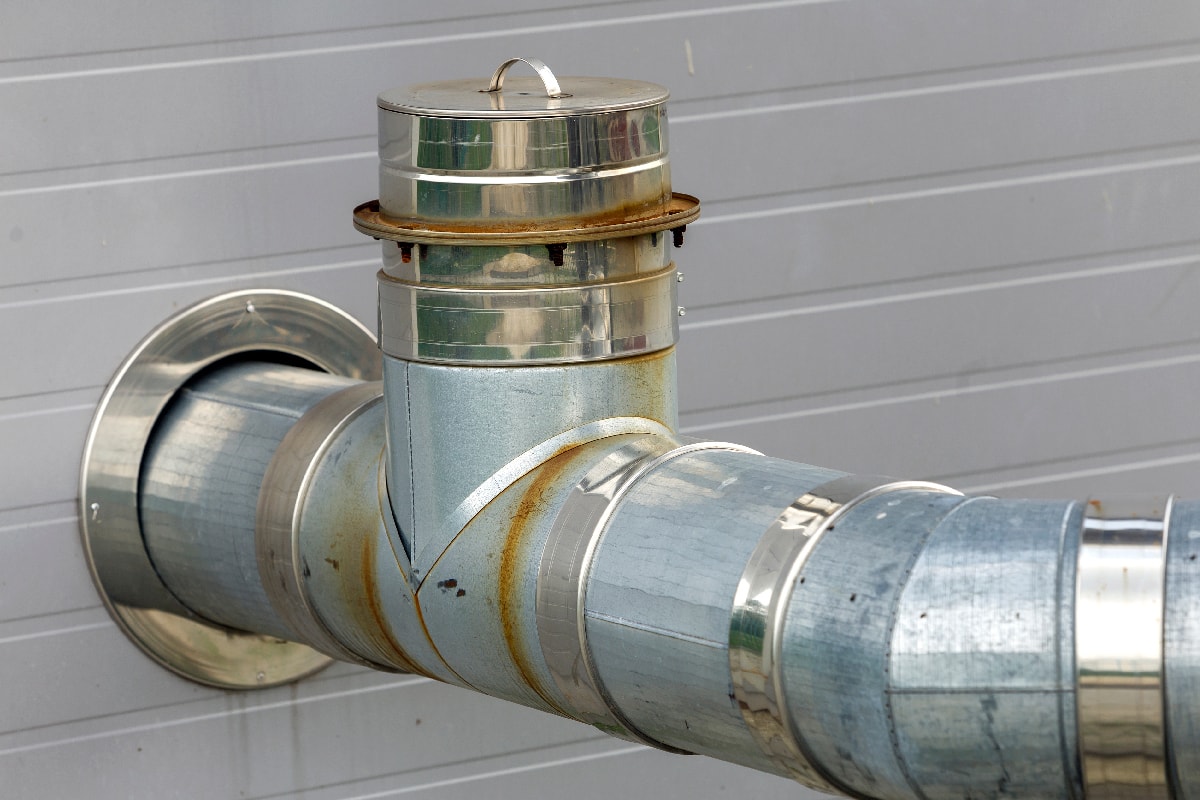
It is safe to extend your generator exhaust outside.
Generators use fuel to work. The types of fuel you use can be diesel, gasoline, natural gas, or propane, depending on the generator engine model. Regardless of the fuel type, exhaust gases are unavoidable by-products of the generator engine.
You should not run the generator inside your home, garage, or in an enclosed area. The generator emits toxic fumes that will harm you and your family's health.
According to the NPR, the carbon monoxide from generators is quickly fatal if it stays in enclosed spaces. Thus, a tube or pipe exhaust extension helps vent out the fumes so you can only breathe clean air inside your home.
Venting out the exhaust with an extension can reduce or eliminate the concentration of the fumes inside your home. If you have a workstation near the generator, on the porch, or garage, you can breathe the fumes due to the lack of proper ventilation.
How Do You Run The Generator Through The Wall With An Exhaust?
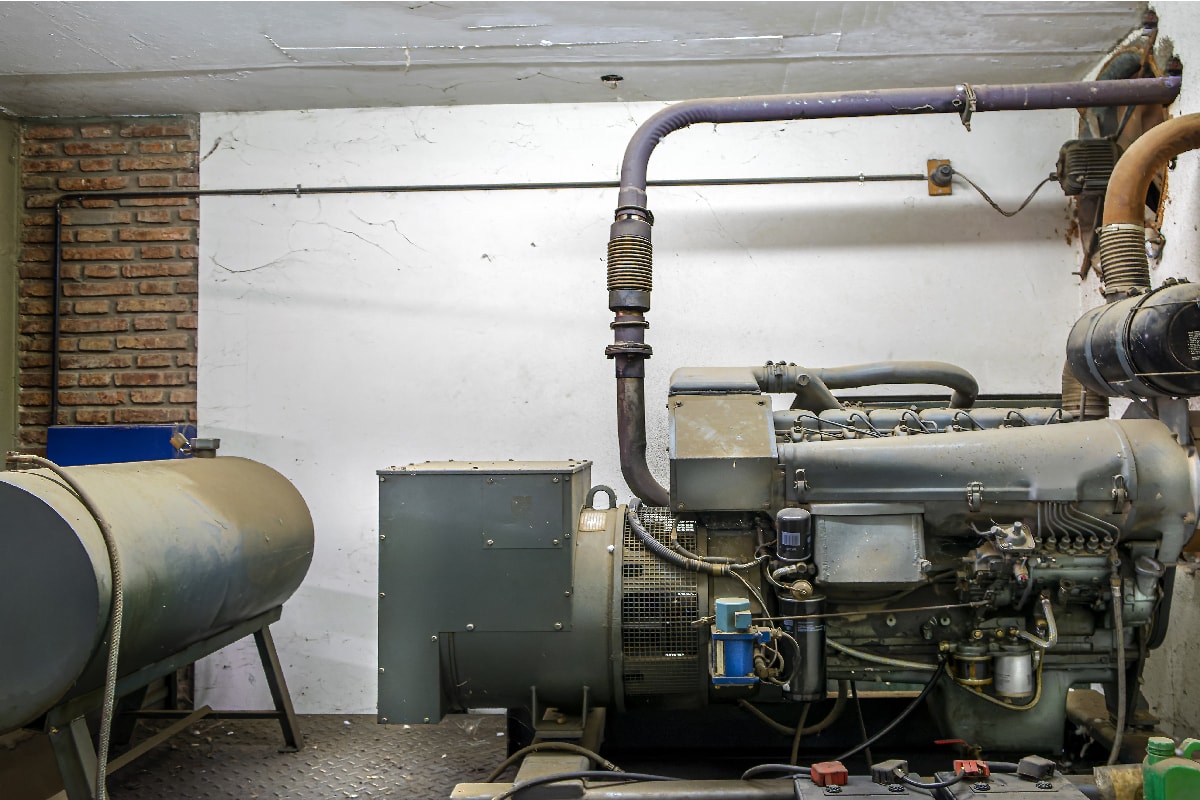
There are specifications to follow if you extend the exhaust of your generator. Generators will heat up and damage the materials it comes into contact. The heat can also cause injuries if you do not properly install the extension through the wall. The generator exhaust temperature
You have to observe the proper distances and precautions if you want to vent out the exhaust extension. Listed below are some tips to remember:
- Install the pipe or tube away from combustible materials with a clearance of 229-millimeter or 9-inch.
- Add some insulation over the extension pipe or tube to prevent heat radiation.
- If the extension will pass through wooden walls or roofs, install metal thimble guards with a 6-12 inches diameter that is larger than the extension diameter. The thimble should also be NFPA-110 and local building code compliant.
- Extend the vertical and horizontal exhaust stacks above and away from the structure and the air intakes.
- Horizontal outlets should go against the winds. In contrast, vertical stacks should have rain caps to foist back pressure.
After all, the proper installation of the extension will keep your home safe. If you don't know how to apply these tips, ask for professional services to help you.
How Long Should The Generator Exhaust Extension Be?
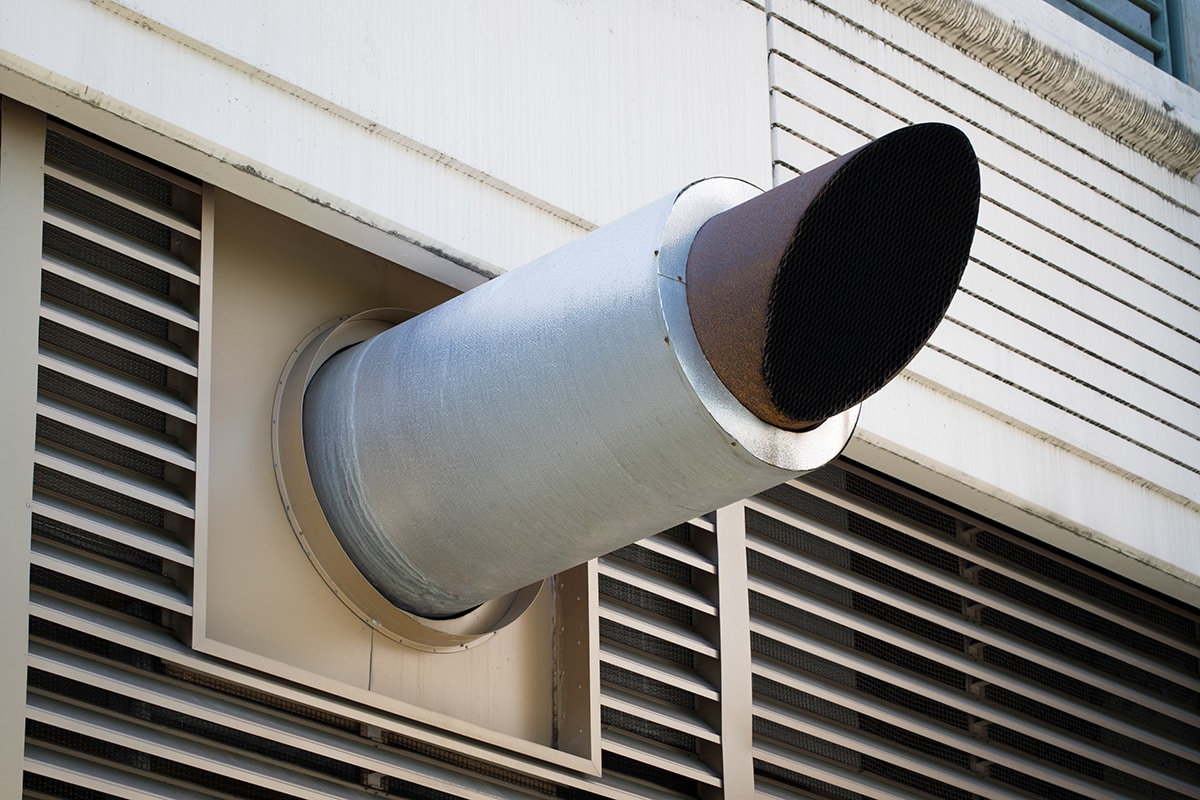
Exhaust extensions range from 6-50 feet. The length of the tube or pipe exhaust extension depends on where you want to vent it out. It is up to you to choose a longer extension if you move the generator around.
To get the length, you should measure the distance from the generator to the nearest window or similar opening.
What Generator Exhaust Extension To Use?
Before you purchase a generator exhaust extension, you should decide if you get a flexible tube or pipe. A flexible tube is the best for an extension because it is flexible and durable. The material of the tube is metal, so it does not melt if it is too hot. If you choose a pipe, you cannot bend it, and it will melt due to the hot temperature of gas passing through it.
After deciding on the material of the extension, you have two options on how to acquire an exhaust extension.
Generator Exhaust Extension Kits
There are plenty of options for generator exhaust extension kits readily available in the market. You can buy online or in-store, and the prices are reasonable.
An extension kit can include the following parts:
- Tube or pipe (differs in material)
- Exhaust adapter bolts
- Clamps
- Muffler and muffler adapter
Click here to see this product on Amazon.
You don't need to purchase the parts separately to have a uniform style and quality. Hence, do a thorough search for a suitable exhaust extension kit to buy.
Selecting Own Materials
It is also fine if you do not want to buy the kit. You need to select quality materials that suit your needs and budget.
Below are some tips when selecting the materials for a generator exhaust extension:
- Get the correct measurements of the generator exhaust diameter and the length from the generator to the vent.
- Buy the extension that suits your needs. It is best to choose a flexible and durable extension. The most reliable extension is a high-quality flex tube.
- Also, you should purchase the appropriate clamp. For a flex tube, a pipe clamp is suitable.
Click here to buy this product on Amazon.
You will get the same results from these options as long as you follow the correct installation of the exhaust extension.
Will Adding An Exhaust Extension Silence A Noisy Generator?
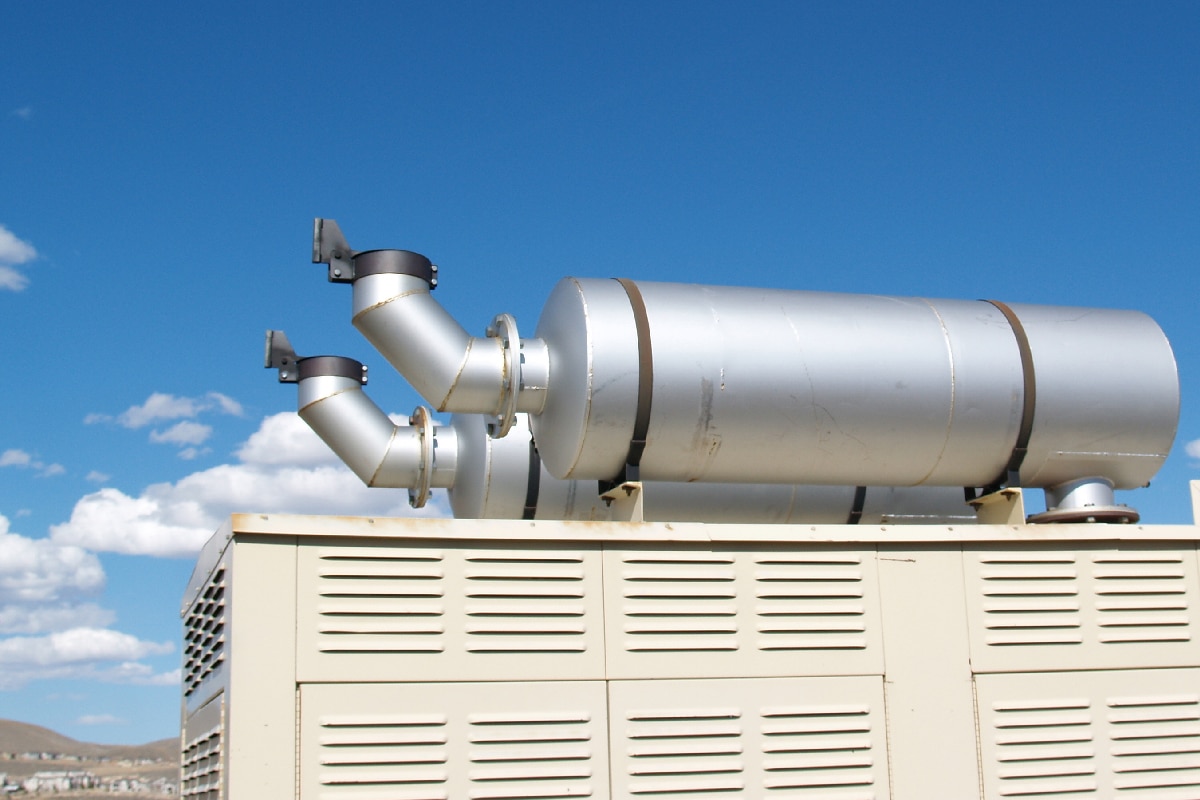
If you add an exhaust extension, it can only slightly reduce the noise. Generators produce deafening noise when it is running. The noise from the generator is still loud. Here are some remedies to lessen the noise from the machine.
- Install sound deflectors around the generator. Add rubber feet or place the generator inside a sound-absorbing baffle box to reduce noise.
- Tighten the loose parts.
- Place the generator away from places where people work or rest.
In Closing
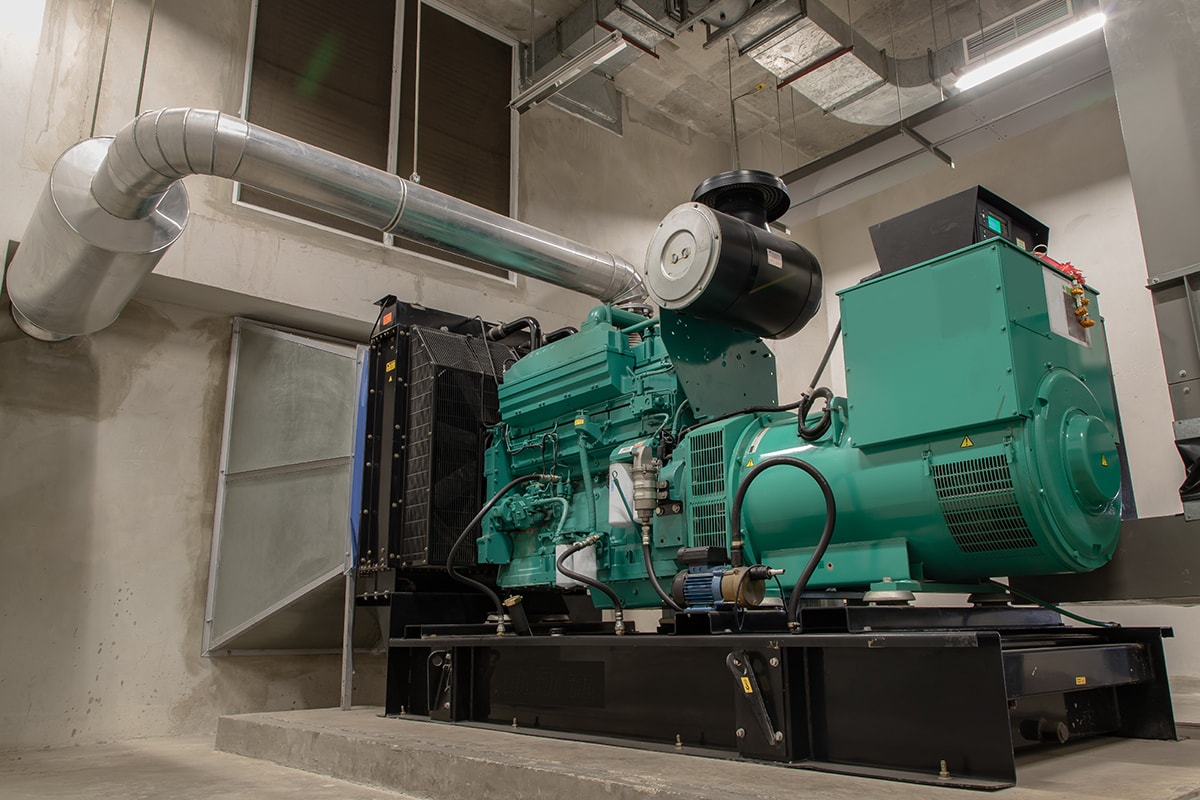
Venting out the generator exhaust will keep clean and toxic-free air inside your home. You can attach an exhaust extension to direct the exhaust gases outside the house. The extension installation will require a flexible, durable, and heat-resistant tube or pipe. You must also create a hole in the wall where the extension passes through.
If you can successfully add the exhaust extension and vent outside, you can stay safe using your generator.
Discover more posts about generators here:


